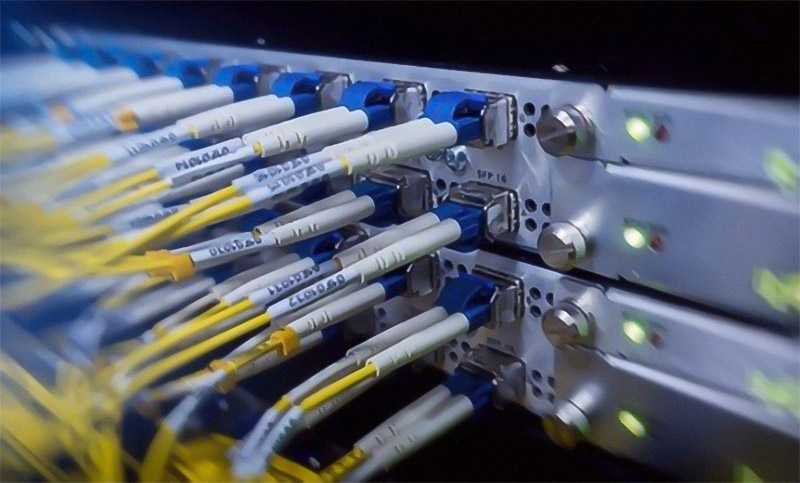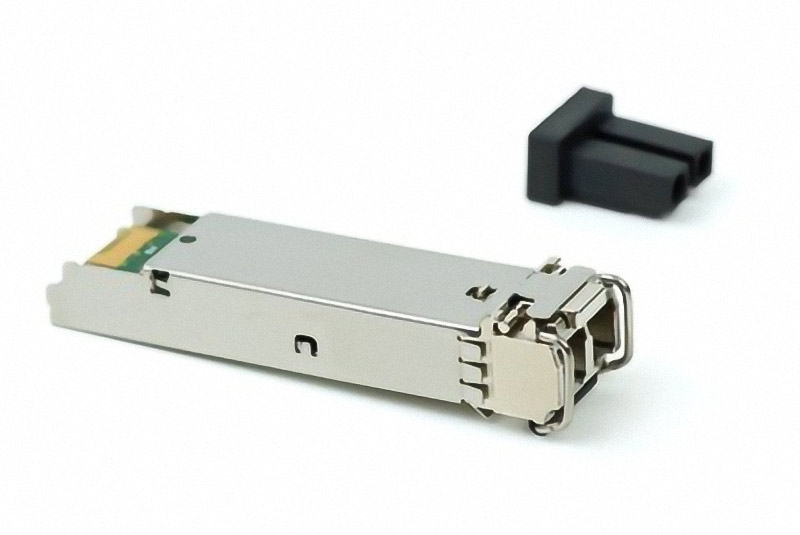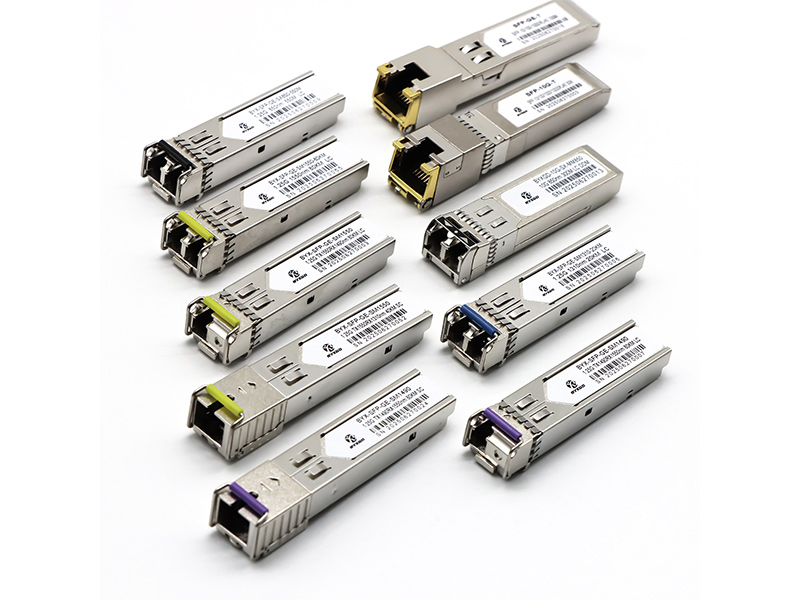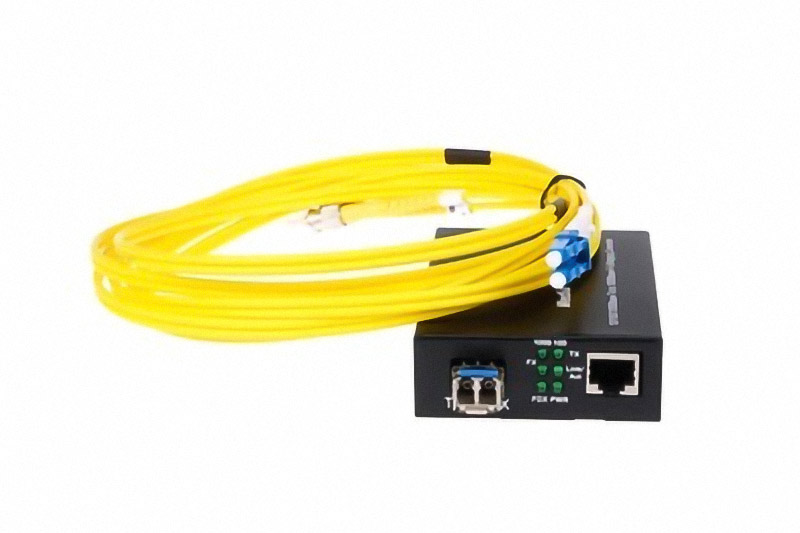Optical Module Failure Diagnosis and Prevention: Securing Network Stability

Have you ever dealt with sudden network drops from faulty optical modules? Issues like this cannot only break communications, but they can really jeopardize business continuity. Understanding how to troubleshoot and prevent a failing optical module is vital for good network stability. This article will help you understand various warning signs for common faults, suggest practical troubleshooting steps, and share preventive inspections and maintenance, so you can do your due diligence in keeping your network safe with high availability.
Failure Warning: Common Optical Module Faults, Symptoms, and Network Impact
There are multiple ways that optical modules fail in common ways that can interrupt network connectivity. The first and most common way is when a module is not detected in a switch or router. This is typically due to one of the following failures: hardware defect, poor seating, or incompatibility. The result here is a down port with no data flow.
The second, and a common, fault is link problems. This could be that the link dropped periodically or the link was unstable. Again, these problems are often related to dirty fiber connectors, but they could also mean damaged cables or even potential module failures due to incompatibility. Link problems often drive users mad while also drastically impacting application performance because the data is no longer free-flowing.
The third way that optical modules fail is through signal attenuation. Signal attenuation depicts the situation where an optical module was damaged, perhaps due to a dirty fiber, a damaged optical cable, or simply through aging optical components (both electronic and crystalline). When signal degradation occurs, where the module is no longer receiving a strong enough signal for the receiver to decipher, data (bits) are dropped, and retransmissions ensue, breaking the efficiency of the network, although mostly unnoticed.
A fourth way the module can fail is high power usage. High usage can point to an electronic failure, laser drift, overheating, or potential breakdown. Often, usage can become excessive and cause further overheating, making the possibility of module breakdown even more unpredictable.
These faults can present themselves, and far beyond, all impact the performance of the overall network. A module that is not operating reliably will impact throughput and latency. Stability issues can cause port issues (down ports) that cause further loss of uptime and revenue. These added fault states complicate trouble ticket/debug scenarios and overall operational activities, which can cause a wide variety of failures, all of which correlate back to the optical module. The importance and role of optical modules in relation to modern networks cannot be overstated. The failure or performance of modules will always correlate to the overall performance and uptime of the network and revenue generation.
(For detailed troubleshooting steps, please refer to the “Troubleshooting and Repairing Optical Transceiver Failures in SFP/SFP+ Modules” article.)

Practical Diagnosis: Systematic Troubleshooting from “Module Not Detected” to “Signal Degradation”
Physical Connection Check, Firmware, and Compatibility Verification
A network device does not detect an optical module; therefore, first take a full physical check. Ensure the module is firmly seated in the port, along with all the fiber connectors firmly attached and undamaged. It is very easy for a device not to recognize a module because of a loose connection or bent fiber cable.
Next, check the device firmware. A switch or router with outdated firmware may not be able to recognize new or third-party optical modules. Checking the firmware version against the manufacturer’s recommendations will help ensure compatibility and facilitate early detection.
Consult the Cisco Compatibility Matrices to ensure the specific model of the module is supported on the targeted switch or router. An unsupported optical module could cause it not to recognize the device in the first place, as well as lead to inconsistent behavior. Reseating the module and trying a different port can also help rule out issues with the hardware.
If a third-party module is being used, remember the possibility of vendor lock-in effectiveness of the fiber, possibly requiring an enable command or a firmware patch. For documentation purposes, always record the troubleshooting steps undertaken and any test results, so that if it continues to not work, you have useful documentation for the process or vendor support.
Optical Power Testing, Fiber Cleaning, and Cable Inspection
Most instances of signal loss and intermittent link problems are caused either by declining optical power or a physical issue in the fiber path. Take the time to measure the transmit (TX) and receive (RX) optical power levels using an optical power meter when the optical link is running. Compare these measurements against the specifications of the module as well as any established link budget to rule out the possibility of not enough optical power being transmitted between the module and the fiber medium.
Cleaning the endfaces of the fiber connection is usually also a necessity. Dust and dirt, as well as oils or cuts in the fibers, will degrade the quality of the signal between the two ends of the fiber cable, causing optical signal attenuation. The best way to clean fiber ends is to use lint-free wipes, a cleaning pen that is specifically made for cleaning fibers, and five gently used isopropyl alcohol. In most instances, cleaning the fiber ends will resolve the situation faster than a hardware swap.
Lastly, inspect the fiber cables carefully for any bends, breaks, or worn fiber connectors for optimal link performance. Using a visual fault locator can also be used to check for hidden breakage in the fibers, especially because there can be breakage not always seen by just visual inspection. Damage to the fiber will always limit its performance, so replace with new, straightened cables in optimized condition.
Proper maintenance of physical components improves stability for the immediate network and also extends optical module life by minimizing stress, as a result of poor connections and continuing signal quality.
Power Anomalies and Environmental Considerations
Increased power consumption typically suggests some internal issues with the internal module, such as laser drift or electronic issues. Tracking the module’s power consumption can help predict future failure. High power spikes can also indicate overheating, as well as degrading optical signals, so always keep a record of power consumption cited above.
Temperature is an important factor in monitoring not only the environment of the networking rack, but also within the transceivers. Excessive temperature conditions can significantly shorten the lifespan of your network’s durability, as well as create intermittent faults and potentially outright failure.
In environmental controls, ensure adequate cooling and airflow conditions, along with humidity controls, assist in maintaining the best conditions for your optical modules. Consider using temperature sensors and humidity sensors in your environment for the same reason–to help avoid stressing systems and new optical modules.
Combining all of these steps and environmental considerations and controls presents a comprehensive methodology that will help avoid downtime and maintain optical transceiver reliability.

Exclusive Data and Case Study: In-Depth Analysis of Failure Causes, Prevention, and Resolution
Classic Customer Case: Diagnosis and Resolution
A top telecommunications company frequently experienced network paths that were slow in performance. The fault, after thorough investigation, was determined to be due to non-operational optical modules in core switches. These optical modules ultimately expressed themselves with an initial symptom associated with snap link drops and high packet loss. The issue often arose at the most inconvenient times, such as during peak hours, affecting packet data throughput.
The technicians engaged sophisticated testing devices and measured the optical power levels. They measured the bit error rate. Both of these tests showed a fluctuating transmit (TX) power and a receiver (RX) power that—at times—was less than the company’s minimum threshold level. This was indeed caused by fluctuating laser drift and the optical degradation of aging modules.
The technicians systematically replaced the modules with optical modules that had been tested for interchangeability from the vendor, thus reinstating the network path performance and stabilizing the links. After replacement, the performance metrics averaged a throughput of 9.5 Gbps, whereas previously it was 4 Gbps. The packet loss, as a result of all outstanding faults previously attributed to optical networking issues, decreased by 80 percent. After testing, the optical module faults were determined to be responsible for every bottleneck.
The takeaway from the case study is clear: robust diagnostics, followed by timely action, means that no other future incidents will have a delayed outcome. With that being said, the usage of diagnostic tools and implementing corrective action early will end delayed service and possibly costly outage times in the future, while at the same time aligning the customer experience with the service-level agreements previously established.
Test Case: Influence of Temperature and Humidity
In laboratory case testing, temperature and humidity levels have significant effects on optical module stability. Operational or excessive temperature for a given optical module typically results in a loss of operational service. In this case, it led to increased degradation of optical power until it significantly decreased its operational capability. These conditions also resulted in increased error rates within the module.
Humidity levels should not exceed the recommended range, as it could promote internal corrosion, whether or not it causes surface failure of the electronic components of the module. This amounts to downgraded performance and ultimately results in outright failure, as it is not possible to control the retention of corrosion. This study suggested errors are due to both types of responses; however, if the temperature did not reach 70°C and the humidity remained in the 10-85% range, longevity would be vastly improved in module use.
Cleaning fiber endfaces routinely reduced the amount of signal attenuation, regardless of ambient environmental conditions—and establishing a culture for maintaining strict environmental conditions presents the greatest preventative measure for expected maintenance.
Overall, these empirical data validate the need for environmental monitoring and habitual cleaning of endfaces as part of the optical module failure prevention strategy.

Preventive Maintenance: Best Practices to Extend Optical Module Lifespan
To maintain strong optical signals, clean fiber endfaces are important. Dust, oils, and scratches on the fiber or connectors can introduce significant optical signal loss and intermittent link problems. Fiber tips can be cleaned efficiently to remove dust and oils by using lint-free wipes dampened with isopropyl alcohol. Specialized cleaning tools, including fiber optic cleaning pens, swabs, and cassette cleaners, will also effectively clean in tight areas for connector-to-connector cleaning. Fiber optic modules should be cleaned regularly to avoid buildup that degrades performance and reduces troubleshooting time.
Environmental Control: Temperature and Humidity Considerations
Optical modules work optimally within certain temperature and humidity ranges, generally from 0-70 degrees Celsius and 10-85% relative humidity. Excessive heat will accelerate wear and tear, and excessive humidity will encourage corrosion. Utilizing airflow, cooling systems, and humidity monitoring systems will assist in maintaining stable conditions. With controlled environmental parameters, you can protect modules from undesirable environmental stresses, extending the operational life and reliability of the module significantly.
Firmware Updating and Monitoring Compatibility
Getting and keeping optical and switch firmware up to date will be an essential part of your optical health. Firmware updates generally include bug fixes and compatibility enhancements for newer optical modules. Staying on top of your vendors’ resources is a good way to maintain your optical system. Vendor websites are generally near real-time solutions for firmware; check regularly to avoid upgrade emergencies. Keeping your optical network equipment functioning with network components is essential to preventing recognition and link failures. By proactively monitoring firmware and compatibility, you can ensure reliable and functional optical systems while the continuous development of technology, standards, and module families continues.
Protect Your Network Stability Through Proactive Diagnosis and Maintenance Solutions
Detecting an optical module problem early and identifying a solution is important to provide fluid network operation. Discuss with expertise, confidence, and valid resources to resolve any optical module problems in a timely manner. Protect your organization’s optical network stability and reliability through proactive diagnosis and preventative maintenance so that you can avoid costly interruptions to services while ensuring long-term performance.
